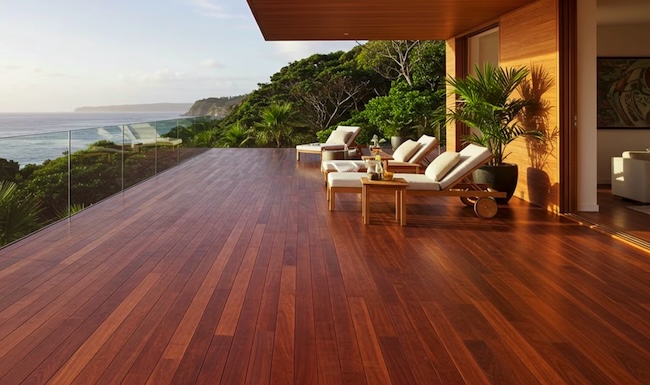Alex Lau's SuperWood Strong As Steel but Much Lighter
By Tom Kagy | 29 Jun, 2025
Liangbing Hu's discovery in a University of Maryland lab has inspired a startup that will begin scaling up production of SuperWood this summer.
SuperWood sounds like a shady male sexual enhancement product you might find advertised in the back sections of men's magazines.
Turns out, it actually is wood modified at the cellular level to be strong enough to replace steel I-beams in a building frame but structurally stiffer so it won't bend in a fire the way steel beams do. In fact, SuperWood is also fire-resistant, so much so that it has a Class A fire rating, the highest rating, the same as non-flammables like brick, gypsum wallboard and fiber cement exterior materials which are unlikely to add fuel to a fire.
What makes SuperWood even more of a wonder material is that its rigidity-to-weight ratio is about ten times that of steel, making it ideal for use in aircraft like flying cars or bulletproof doors, especially as it has the look and feel of expensive tropical hardwood.
SuperWood was invented by Liangbing Hu in 2018 while he was a materials engineer directing the University of Maryland's Center for Materials Innovation at College Park. Hu's work, published in Nature, stirred up excitement.
To produce this wonder material at the UM lab Hu soaked wooden boards in a mild aqueous solution that extracts part of the lignin and hemicellulose while leaving the cellulose fibres largely intact.
Once softened, the boards were subjected to moderate pressure at about 150° fahrenheit, collapsing cell walls, aligning cellulose nanofibrils and allowing residual lignin to flow and re-bond to lock in the new molecular structure.
The pressing reduces the board to about a fifth of its original thickness, further concentrating the cellulose network and raising the bulk density. Remarkably, and critically from an economic standpoint, the process works with many fast-growing softwoods and even with non-woody species like bamboo.
The resulting SuperWood has a tensile strength up to 50 percent higher than structural-grade steel on an equal-cross-section basis, according to independent laboratory testing. But being much lighter than steel, Superwood has a strength-to-weight ratio roughly ten times that of steel. It also has an order-of-magnitude gain in toughness compared with the parent wood, while compression and bending strengths also rise markedly, according to Charpy V-notch tests, a standardized high strain rate test to measure the amount of energy absorbed by a material during fracture.
After the initial excitement faded Alex Lau remained interested in SuperWood's business potential. He contacted and persuade Hu to let his invention be commercialized, according to a Wall Street Journal piece.
Thus InventWood was born in 2021. The next year it received a $20 million grant from the Energy Department, followed by $15 million from a series A round and an additional $15 million in other financing secured by Lau as InventWood's CEO.
Hu is now a professor at Yale while the startup's daily operations have moved to a 90,000-square-foot Maryland manufacturing facility. Large-scale production of SuperWood is scheduled to begin later this summer and expand into a second quarter-million square-foot facility under construction.
Superwood is compared with carbon fiber in its versatility but is less brittle. The use of carbon fiber in tennis rackets, jet aircraft and race cars suggests some possibile uses. Even a laptop or smartphone with the rich texture of wood is possible, according to Lau.
Hu is now a professor at Yale while the startup's daily operations have moved to a 90,000-square-foot Maryland manufacturing facility. Large-scale production of SuperWood is scheduled to begin later this summer and expand into a second quarter-million square-foot facility under construction.

The beauty of SuperWood is expected to be one of its selling points in the construction industry.
Asian American Success Stories
- The 130 Most Inspiring Asian Americans of All Time
- 12 Most Brilliant Asian Americans
- Greatest Asian American War Heroes
- Asian American Digital Pioneers
- New Asian American Imagemakers
- Asian American Innovators
- The 20 Most Inspiring Asian Sports Stars
- 5 Most Daring Asian Americans
- Surprising Superstars
- TV’s Hottest Asians
- 100 Greatest Asian American Entrepreneurs
- Asian American Wonder Women
- Greatest Asian American Rags-to-Riches Stories
- Notable Asian American Professionals

